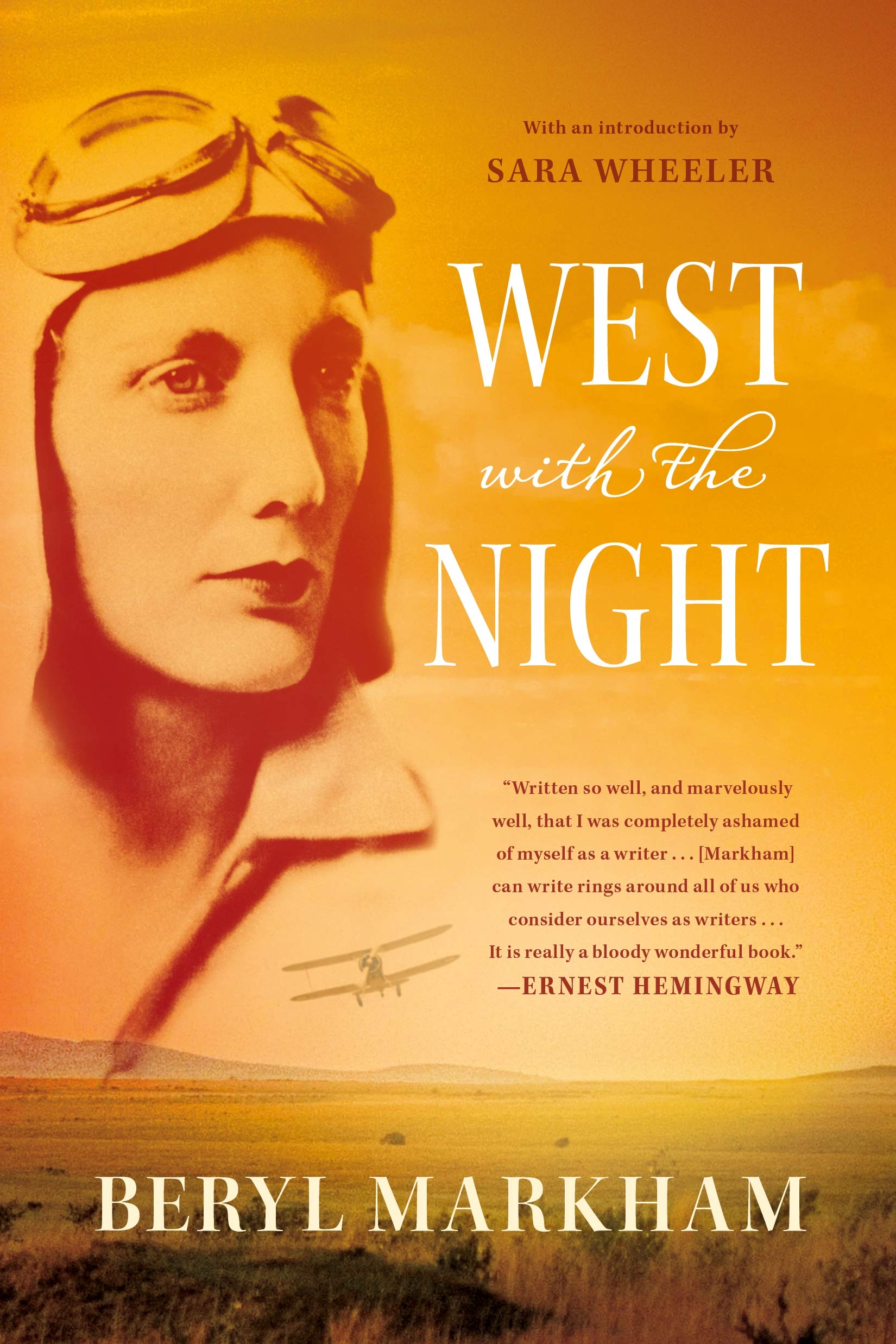
Armchair travel around the world!
Start your reading adventures with our FREE Reading Atlas.

- Around the World in 14 Books
- 7 Thrilling Book Series
- 6 Audiobooks That Are Like Theater For Your Ears



This aviation memoir (293 pages) was published in January of 2013 by North Point Press. The book takes you to 1930s Kenya. David read West with the Night and loved it; it wouldn't be on our site if he didn't recommend it.
Bookshop.org is an online bookstore with a mission to financially support independent bookstores and give back to the book community.

In this unputdownable memoir, Beryl describes her larger-than-life adventures growing up in Kenya, starting with her unorthodox childhood, through her career as an aviatrix, and onto her record-breaking flight across the Atlantic.
Descriptions of the remarkable Beryl Markham make her sound like a fictional character, an overwritten adventure character — like an old lover of Indiana Jones that he somehow has to reconcile with before they fetch the Jar of Souls from the haunted temple in the jungle. But she is not. Beryl Markham was a real woman, and you will be delighted to get to know her.
She was born in England and moved with her family to her father’s horse farm in Africa in the early 1900s. Although her pale skin and curly blonde hair distinguished her among the local children, she routinely played with the local boys, learning to run barefoot and spear-hunt alongside them. Her best friend Kibii taught her to jump as high as her head (because the local tribal leader believed that a man who couldn’t jump as high as his head wasn’t any good.) She soon knew how to speak three different African languages. And, no big deal, she survived a lion attack as a kid.
When she was 18, Beryl’s father left for Peru, leaving his daughter behind in an arranged marriage. Beryl became Africa’s first — and maybe the world’s first — professional female horse trainer. She also learned to fly a plane. By her 20s, she’d rid herself of her husband and was the only woman working as a licensed pilot in all of Africa, delivering mail, taking medicine to villages, and helping scout for elephant hunters.
She had many love affairs and even hobnobbed with Prince Henry, the third son of King George V (although she was, eventually, offered a lifetime stipend on the condition that she leave England and never return).
And, on 04 September 1936, she took from Abingdon, England, and flew west across the Atlantic to Nova Scotia, the first person, male or female, to accomplish that feat.
On top of all of this — her bravado, skill, self-reliance, and lust for life — she was also a stunningly good writer. Ernest Hemingway himself said of her book, ‘She has written so well, and marvelously well, that I was completely ashamed of myself as a writer.’
A good travel writer will make you yearn to do things you know are the wrong choice for you. This book may very well convince you to build a time machine so that you may go back to the 1930s, become a pilot, and navigate a two-seater plane over African plains.
Swiftness, distance, and the ability to withstand rough weather were, none of them, merits of the Klemm. Neither the plane nor the engine it carried was designed for more than casual flying over well-inhabited, carefully charted country, and its use by East African Airways for both transport and messenger service seemed to us in Kenya, who flew for a living, to indicate a somewhat reckless persistence in the pioneer tradition.
The available aviation maps of Africa in use at that time all bore the cartographer’s scale mark, ‘1/2,000,000’ — one over two million. An inch on the map was about thirty-two miles in the air, as compared to the flying maps of Europe on which one inch represented no more than four air miles.
Moreover, it seemed that the printers of the African maps had a slightly malicious habit of including, in large letters, the names of towns, junctions, and villages which, while most of them did exist in fact, as a group of thatched huts may exist or a water hole, they were usually so inconsequential as completely to escape discovery from the cockpit….
All this, together with the fact that there was no radio, nor any system designed to check planes in and out of their points of contact, made it essential for a pilot either to develop his intuitive sense to the highest degree or to adopt a fatalistic philosophy toward life. Most of the airmen I knew in Africa at that time managed to do both. — Beryl Markham
Wanna help us spread the word? If you like this page, please share with your friends.
Strong Sense of Place is a website and podcast dedicated to literary travel and books we love. Reading good books increases empathy. Empathy is good for all of us and the amazing world we inhabit.
Strong Sense of Place is a listener-supported podcast. If you like the work we do, you can help make it happen by joining our Patreon! That'll unlock bonus content for you, too — including Mel's secret book reviews and Dave's behind-the-scenes notes for the latest Two Truths and a Lie.
Join our Substack to get our FREE newsletter with podcast updates and behind-the-scenes info — and join in fun chats about books and travel with other lovely readers.

We'll share enough detail to help you decide if a book is for you, but we'll never ruin plot twists or give away the ending.
Content on this site is ©2026 by Smudge Publishing, unless otherwise noted. Peace be with you, person who reads the small type.